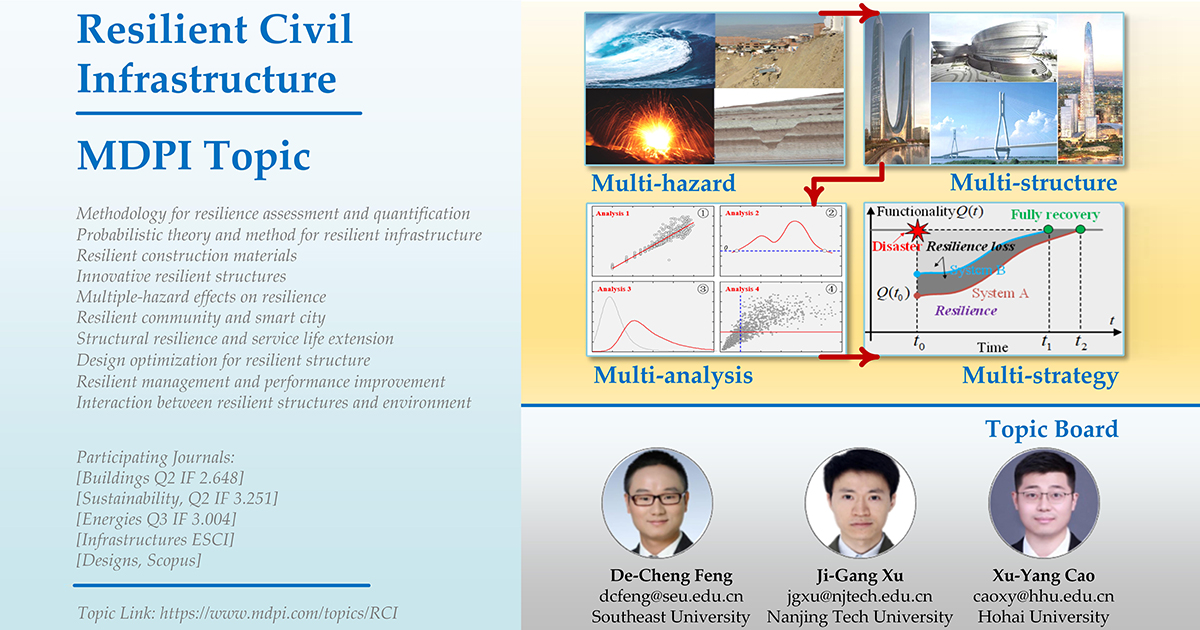Resilient Civil Infrastructure, 2nd Edition
Topic Information
Dear Colleagues,
This topic is “Resilient Civil Infrastructure”, which has proven to be successful in the past (https://www.mdpi.com/topics/RCI). Due to their vital role in modern communities and cities, civil infrastructures should be able to resist and recover from natural or human-made disasters such as earthquakes, hurricanes, floods, tsunamis, fires, blasts, etc. Developing a resilient civil infrastructure has garnered significant research attention over the last decade. Although significant advances have been made in this field in recent years, there are still important challenges related to more effective resilience quantification and the resilience enhancement of civil infrastructures to multiple disasters, ranging from the theory aspect (e.g., mechanical principle, interaction effect) to the technology aspect (e.g., material property, system innovation) and the decision aspect (e.g., assessment strategy, decision making). These challenges require further, more comprehensive efforts and more general intervention planning. From the above perspective, this topic aims to improve knowledge and performance in resilient civil infrastructure through enhanced scientific and multi-disciplinary works. The potential topics include (but are not limited to): Methodology for resilience assessment and quantification; Probabilistic theory and method for resilient infrastructure; Resilient construction materials; Innovative resilient structures; Multiple-hazard effects on resilience; Resilient community and smart city; Structural resilience and service life extension; Design optimization for resilient structure; Resilient management and performance improvement; Interaction between resilient structures and environment.
Prof. Dr. De-Cheng Feng
Dr. Ji-Gang Xu
Dr. Xu-Yang Cao
Topic Editors
Keywords
- life-cycle hazard resilience
- resilience assessment and enhancement
- resilience under multiple hazards
- innovative resilient structures
- high-performance materials for resilience
- resilient community and city
- service life resilience evaluation
- resilient design optimization
- resilient probabilistic theory
- resilient assessment approach
- resilient management strategy
- resilient interaction.
